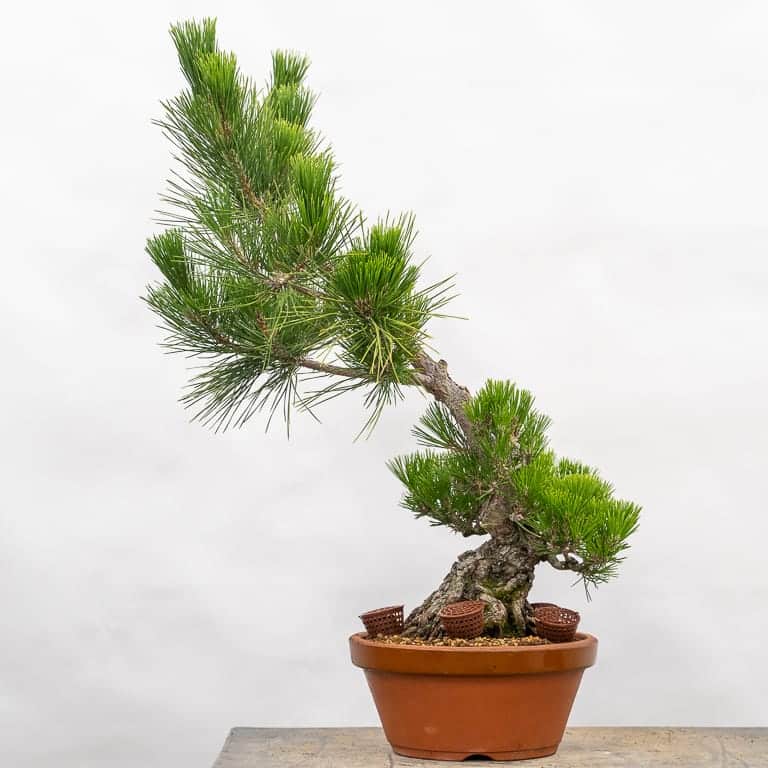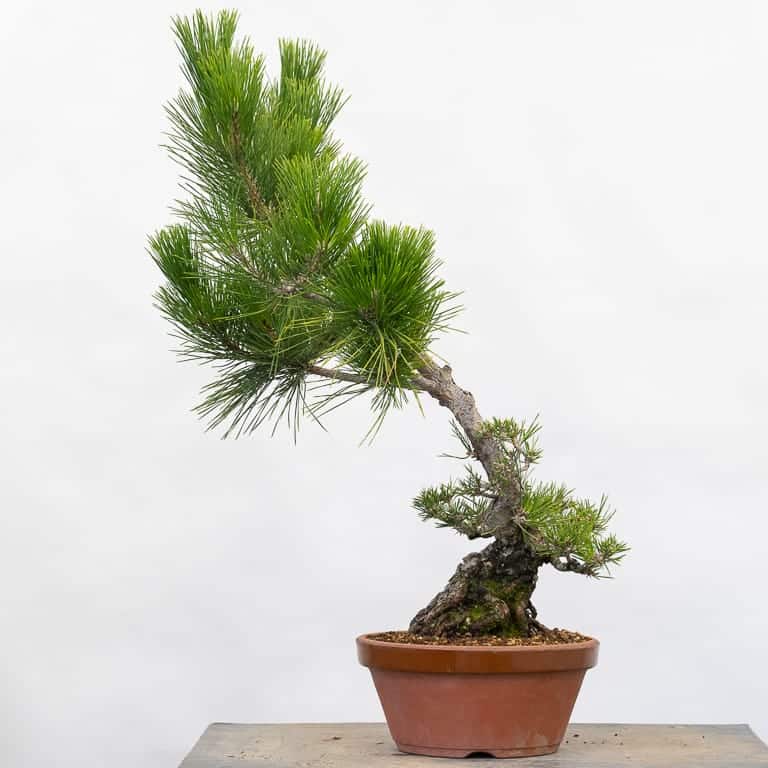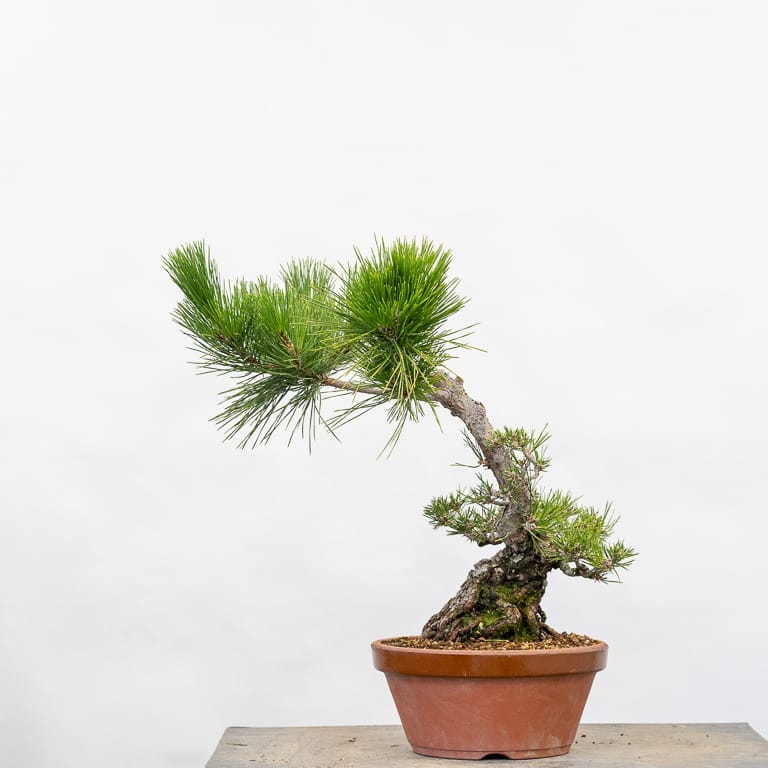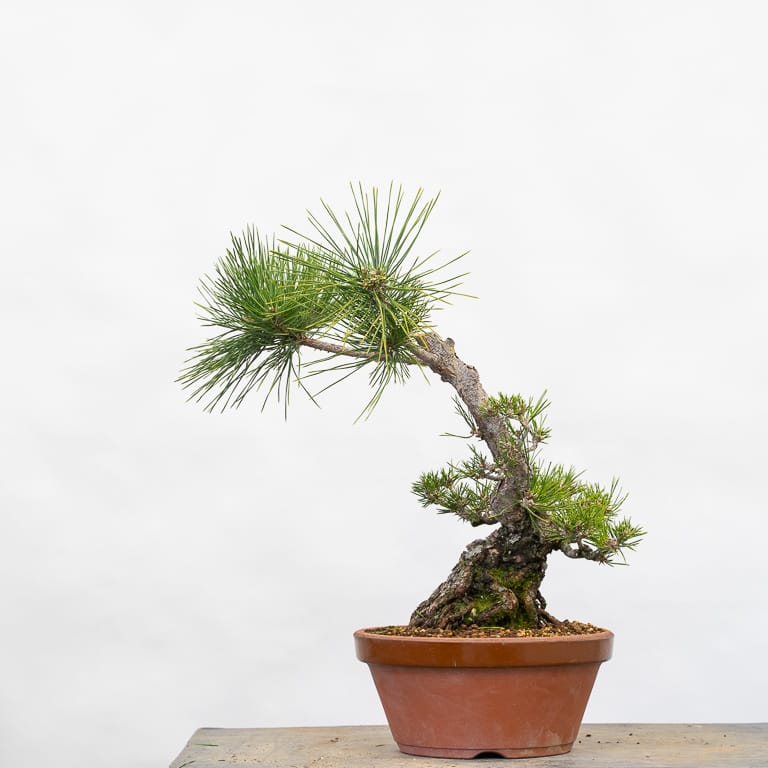The pine below is getting close to its final shape.

Japanese black pine – 15 years old from seed
As you can see from the photo, there is a large gap in vigor between the sacrifice branch and the lower branches. After decandling and thinning needles on the lower branches – standard work for pines at this stage of development – the gap is even more apparent.

After decandling the lower branches
If I put the tree back in the garden like this, I’d expect a very weak response from the decandling. The tree would continue to invest its resources in the upper branches and produce little, if any, summer growth on lower part of the tree.
Because the sacrifice branch has already fulfilled its role in thickening the trunk, I can reduce it to encourage the tree to produce stronger growth in the lower branches.

After reducing the sacrifice branch
As you can see, even though I removed a large portion of the foliage on the sacrifice branch, the remaining shoots are still quite vigorous compared with the small shoots below. To balance the top and bottom branches, I decandled the shoots on the sacrifice branch and removed more than half of the remaining needles.

After decandling the sacrifice branch

After thinning needles on the sacrifice branch – 14″ tall
The lower branches now have more needles than the upper branches. This will help me shift vigor away from the upper branches and encourage the tree to produce strong summer growth on the lower branches.
I plan to remove the sacrifice branch once the branches that form the future apex get bigger. In the meantime, I can work on pruning, wiring, and styling the rest of the tree tree.
Subscribe to Bonsai Tonight
New Posts Delivered Every Tuesday and Friday
Louis Dallaire says
Can you tell us at what time of year you did this work in your region please ?
Thanks
Jonas Dupuich says
Hi Louis! It was either the end of June or beginning of July when the tree was decandled. I plucked the needles and trimmed the sacrifice branch two weeks later.
Keegan says
And why wait to remove the sacrifice branch, if it has served its purpose? You’d think the branches in the apex would get bigger faster if you remove it, no?
Jonas Dupuich says
Hi Keegan! Good question. My best answer is that I wait because I like to remove sacrifice branches incrementally in the later stages of development. I don’t know that this is necessary – it could be that the tree will remain balanced and that I’ll get bigger branches near the apex in less time if I cut it all now. My focus is more on quality more than on time so I don’t mind reducing sacrifice branches like this incrementally to help preserve the short internodes below. Once I have short internodes where I want them, I can always let a branch grow to thicken the new apex.
Put simply, the biggest “problem” with an incremental approach is that it might take a bit longer. The biggest problem with cutting it all now is that I’ll have to deal with longer internodes.
Hope this helps!
Tony says
When is the best time of year to remove a sacrifice branch from a pine (once it has served its purpose)?
Jonas Dupuich says
Good question Tony! The best times are the end of winter/early spring, decandling time, and fall/winter. I like removing larger sacrifice branches at the start of, or in the middle of, the growing season to give the wound time to heal. I’ll remove smaller sacrifice branches on refined trees or larger branches on trees in early development in fall or winter.
When it’s time to make the cut, I usually leave large stubs on larger sacrifice branches and then clean up the area up to a year later.
Does this help a bit?